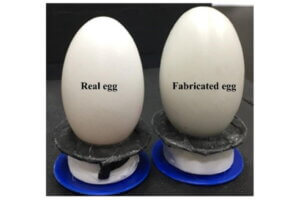Spotting the Difference: Real vs. Fake Eggs

1. Shell Appearance
Real organic eggs typically have a rougher, more uneven shell compared to synthetic or non-organic eggs, which may have a uniformly smooth and often shinier surface. Organic eggs can also vary in color and size.
2. Yolk and White Consistency:Crack the egg open and observe the yolk and the white. Organic eggs usually have a vibrant, orange-yellow yolk and a thick, slightly opaque white that stays close to the yolk. Synthetic eggs or lower-quality non-organic eggs might have a pale yolk and a very runny white that spreads wide across the plate.
3. Water Test:
Place the egg in a bowl of water. Real eggs generally sink because they have less air inside, making them denser. An egg that floats could be old or non-organic, as older eggs accumulate more air over time.
4. S:mell Test
Real eggs have a mild scent that is not unpleasant. If the egg has a strong, chemical smell or no smell at all, it might be synthetic or heavily processed.
5. Flame Test
Use caution with this test. Hold a flame to the shell after cracking the egg. Real eggshells, made primarily of calcium carbonate, will emit a slight burning smell. Synthetic shells, made from chemicals, might produce an acrid plastic smell.
6. Taste and Texture:
Nothing beats the taste test. Organic eggs generally have a richer and creamier texture when cooked, with more flavor than non-organic or synthetic eggs, which can be bland or slightly chemical in taste.
